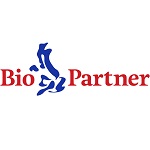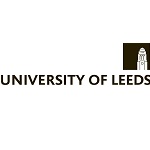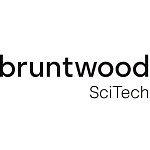Achieve Exceptional Results by Rebranding Your Biotech Company the Right Way

Rebranding a biotech company is a bold yet significant move that can propel your business forward, attract investors, and clarify your market positioning. But it can also be a disaster if done poorly. A failed rebrand can confuse customers, alienate stakeholders, and dilute your company's identity.
Yes - there is a right way and a wrong way to rebrand
Your brand must maintain relevance, especially within the biotech industry, which moves at lightning speed. Whether your business is evolving due to breakthroughs in research, regulatory changes, or a shift in market focus, your brand should reflect your expertise, values, and ambitions.
Our article explores the pitfalls of a poorly executed rebrand, outlines the steps for a successful transformation, and provides key takeaways to ensure your biotech brand thrives. With our 30 years of experience creating brands and logos and telling our clients' stories, why not take advantage of our insight and avoid costly mistakes?
The Risks of Getting a Biotech Rebrand Wrong
Rebranding isn't just about a new logo or a refreshed website. It's about repositioning your company in the minds of your stakeholders. If done incorrectly, a rebrand can have dramatic and costly implications - things to avoid include:
Don't Confuse or Alienate Your Audience
Your existing customers, investors, and partners know you under a specific name and visual identity. A drastic, unplanned change can leave them disoriented.
Take, for example, biotech companies that have rebranded without clear communication. When a new name and identity appear overnight, stakeholders may assume the company has changed ownership, pivoted away from its core expertise, or lost its credibility. This uncertainty can erode trust.
Don't Dilute Your Brand's Scientific Authority
Biotech is a field built on trust, data, and scientific rigor. If your rebrand moves too far into flashy marketing without retaining the essence of your expertise, it could alienate your core audience—scientists, researchers, and healthcare professionals.
Overly generic branding, vague messaging, or the removal of key scientific elements from your identity can make you appear less credible. Biotech is a technical industry, and your brand should reflect that level of precision and knowledge.
Don't Overlook the Practical Use of Your Brand
Many biotech companies focus on aesthetics in a rebrand but forget about functionality. Your branding needs to work across various platforms, from clinical trial documentation and scientific papers to trade show materials and digital assets.
For example, if your new logo doesn't work on small labels, scientific reports, or medical devices, it could cause real-world usability issues. A rebrand should enhance efficiency, not complicate it.
Don't Miss the Opportunity to Reinforce Your Unique Position
A rebrand is a chance to solidify your position in the biotech landscape. If done without strategic insight, you might end up blending into the crowd. Generic branding won't set you apart from competitors.
Instead, your rebrand should highlight what makes your biotech company unique—whether it's groundbreaking research, cutting-edge technology, or a pioneering approach to healthcare solutions.
Avoiding these pitfalls requires careful planning, industry insight, and a clear strategic vision.
How to Successfully Rebrand Your Biotech Company
The Right Way!
A successful rebrand should clarify your company's mission, elevate your credibility, and create an identity that supports your long-term goals. Here we provide a few tips on how to deliver a rebrand project, based on our 30 years of experience and insight.
#1 Define the Reason for Your Rebrand
Before you change anything, ask: Why are we rebranding?
Some common reasons biotech companies rebrand include:
- Expanding into new markets or regions.
- Merging with or acquiring another company.
- Aligning branding with updated research, products, or technology.
- Addressing outdated branding that no longer reflects the company's mission.
Make sure that the whole company is onboard with the rebrand. Companies are more than their logo or visual identity, they have a significant human factor! Make sure the wider team is included and supports decisions that are made during the process.
Whatever the reason, ensure it's well-defined and supported by internal data and stakeholder input. Your rebrand should be a strategic decision, not just a design refresh.
#2 Conduct a Brand Audit
A brand audit helps identify what's working and what isn't. Analyse your:
- Current brand perception among employees, clients, and investors.
- Website and digital presence.
- Logo, typography, and colour palette.
- Messaging, including mission statements and tone of voice.
- Wider promotional assets, such as exhibition stands, sales materials or publications
Gather data from surveys, interviews, and market research. Find out what people associate with your brand and whether those perceptions align with your future vision. This doesn't have to be a massive, time-consuming project. Once you get started, you'll soon get an idea of what your biotech company is doing.
The Team at Arttia Creative can help with Brand Audits.
#3 Develop a Clear Brand Strategy
Your biotech company's brand strategy should answer key questions:
- Who is our audience? (Scientists, healthcare professionals, investors, patients?)
- What is our brand personality? (Are we authoritative, cutting-edge, patient-focused?)
- How do we want to be perceived? (As an innovator, a trusted leader, a disruptor?)
In the biotech industry, a brand strategy is a long-term plan designed to create a successful brand that supports your business goals. It is the foundation of how a biotech company presents itself to the world, ensuring consistency across all customer touchpoints.
A strong brand strategy is not just about differentiation, it's about building trust and recognition for your biotech business. A few high-profile life sciences rebrands—for example, GSK, Verily, and a wide range of healthcare companies—have often spent millions to roll out a new identity. Therefore, they must consider it necessary for company growth and profits.
It encompasses your biotech brand's identity, messaging, positioning, and emotional and human connection.
Brand positioning is a key element of a biotech brand strategy, which defines how a brand wants to be perceived in the marketplace. Brand positioning involves identifying a unique value proposition and ensuring that all communications and customer experiences reinforce this positioning.
Another component is brand messaging, which includes the tone of voice, key messages, and storytelling that communicate the brand's values and personality.
Clear and consistent messaging ensures that customers and stakeholders understand what the brand stands for and why it matters.
Visual identity is also crucial to a brand strategy. Visual identity includes elements such as logos, colour palettes, typography, photography, video or graphics.
A comprehensive brand strategy also considers the customer experience (CX). Every interaction with your brand—whether through your biotech website, social media, customer service, or product packaging—aligns with the brand's values and promises. A seamless and positive customer experience strengthens brand loyalty and builds essential trust, which is a critical part of life sciences and healthcare.
Finally, a strong brand strategy includes a brand evolution and growth plan. Markets and consumer preferences change over time, so a brand strategy should be flexible enough to adapt while maintaining its core identity.
A strong strategy ensures your rebrand has a solid foundation and a clear direction.
#4 Designing a Cohesive Visual Identity
Your biotech company's brand strategy should answer key Your visual branding should reflect your biotech expertise while being modern and adaptable. Consider:
- Creating an original, flexible brand mark, logo or icon that conveys your innovation and credibility
- A professional colour palette that aligns with scientific and medical industries (avoiding overused biotech blues and greens unless they have a strategic reason).
- Clean, legible, and adaptable typography across digital and print assets.
- Consistent imagery and graphics reinforce your brand's purpose, whether cutting-edge research or patient-centred solutions.
- Build on your brand story.
- Create a logo that is accessible and flexible.
Your brand should work across all platforms, from lab reports and investor presentations to social media and event banners.
A comprehensive brand guidelines document is essential for maintaining a consistent identity across all communications. It acts as a strategic blueprint, outlining key elements such as logo usage, colour palettes, typography, imagery, tone of voice, and messaging principles.
Brand guidelines provide a set of rules, guidance and standards, ensuring that every team member, partner, or external agency adheres to the same visual and verbal identity. This prevents inconsistencies that could dilute brand recognition and credibility.
In an increasingly competitive market, well-defined brand guidelines provide a foundation for delivering a cohesive, professional, and memorable brand experience.
#5 Refresh Your Website
Your website is often the first point of contact for investors, clients, and potential partners. During a rebrand, ensure your biotech website:
- Communicate your updated mission and value proposition.
- The style is visually aligned with your new brand identity
- Features high-quality content that speaks to both scientific and business audiences.
- It is optimised for search engines (SEO for biotech is essential for visibility).
- The copywriting reflects any changes in tone of voice, messaging, headlines and calls to action.
- Downloads or assets are rebranded to match the new brand
- Update any design patterns or design systems used to create new content
Don't just redesign the look and feel of your biotech website—enhance its functionality, user journey, visual interface and performance.
#6 Effectively Communicate Your Rebrand
Rebranding requires clear communication with internal and external stakeholders. Develop a rollout plan that includes:
- Internal launch – Train employees on the new brand identity and messaging.
- Client and partner outreach – Notify key stakeholders about the rebrand before it goes public.
- Press releases and social media – Publicly announce the rebrand with strategic messaging.
- Partners, send them brand kits so they can update their content
- Distribute brand guidelines
If your rebrand has taken a whole new direction, consider a phased approach to avoid confusion. Your customers may not have time to digest a whole new brand story and deliver it in phases or chunks for easy reading.
#7 Monitor, Evaluate, and Adjust
After launching your rebrand, track key performance indicators (KPIs):
- Website traffic and engagement.
- Brand sentiment (customer and investor feedback).
- Conversion rates for biotech partnerships or funding opportunities.
- Sales figures may reflect renewed confidence in customers
- Events and conferences are a great place to get customer feedback
Gather insights and refine as needed. A rebrand isn't a one-time project—it's an evolving strategy.
The Takeaway.
A Rebrand Should Empower Your Biotech Growth
A well-executed rebrand strengthens your biotech company's identity, clarifies your market position, and builds trust among stakeholders. Done correctly, it can:
- Enhance credibility and authority in your field.
- Improve engagement with investors and customers.
- Reflect on the true scope of your research and innovation.
However, a poorly executed rebrand can have the opposite effect—leading to confusion, lost credibility, and disengagement.
You need to partner with a specialist biotech branding agency that understands the nuances of your industry. Arttia Creative's expert guidance ensures your rebrand delivers measurable results, from scientific accuracy to visual storytelling.
Need Help Rebranding Your Biotech Company?
At Arttia Creative, we specialise in biotech branding, digital marketing, and website development tailored to life sciences. Our expertise helps you create a brand that truly reflects your company's impact and innovation.





















